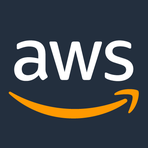Navigating the Cloud: The Rise of Serverless and Cloud Governance
June 21, 2025, 10:08 am

Location: United States, Washington, Seattle
Employees: 1-10
Founded date: 2006
Total raised: $8.31B
In the vast expanse of technology, two trends are emerging as guiding stars: serverless computing and cloud governance. Both are reshaping how businesses operate in the digital age. They promise efficiency, scalability, and control. But they also come with their own sets of challenges.
Serverless computing is like a magic trick. You write code, and it runs without you worrying about the underlying infrastructure. It’s a dream for developers. They can focus on what matters: building applications. No more fussing over servers or scaling issues. The cloud provider takes care of that.
Imagine a restaurant where the chef only needs to cook. The waitstaff, the kitchen equipment, and the ingredients are all managed by someone else. This is the essence of serverless. You pay only for what you use. If the restaurant is empty, you don’t pay for empty tables. This model is attractive, especially for startups and agile teams.
However, the allure of serverless is not without its pitfalls. Cold starts can be a nightmare. If a function hasn’t been used in a while, it can take time to spin up. For applications that require instant responses, this delay can be unacceptable. Think of it as a chef who takes too long to prepare a dish when a customer is hungry.
Vendor lock-in is another concern. Once you dive deep into a specific cloud provider’s ecosystem, switching becomes a Herculean task. Each provider has its own quirks and tools. Moving away can feel like untangling a web of dependencies.
Then there’s the issue of execution time limits. Most serverless platforms impose strict caps on how long a function can run. If your application requires long-running processes, you may need to rethink your architecture. It’s like trying to fit a square peg into a round hole.
Monitoring and debugging in a serverless environment can also be tricky. Traditional tools may not capture the ephemeral nature of serverless functions. Architects must adapt their strategies to ensure observability.
On the other hand, cloud governance is stepping into the spotlight. As businesses migrate to the cloud, the need for oversight grows. CloudQuery, a developer-first cloud governance platform, recently raised $16 million to tackle this challenge. The company is transforming data from over 60 sources into a single, queryable data warehouse. This approach offers real-time visibility across fragmented infrastructures.
Imagine a conductor leading an orchestra. Each musician plays a different instrument, but together they create harmony. CloudQuery aims to bring that harmony to cloud governance. It allows teams to build custom dashboards and alerts without the headache of complex data pipelines.
The funding will help CloudQuery expand its product offerings and scale its market presence. With quadrupled annual recurring revenue and a growing customer base, including Fortune 500 companies, the momentum is undeniable.
CloudQuery’s approach is akin to a GPS for cloud governance. It provides clarity and control in a complex landscape. Security and compliance are paramount, and CloudQuery’s platform addresses these needs head-on.
However, the road ahead is not without obstacles. As cloud adoption accelerates, so do the challenges. Security teams must navigate a labyrinth of regulations and compliance requirements. CloudQuery aims to simplify this process, but the landscape is ever-evolving.
In the realm of serverless, testing becomes crucial. Automated testing is essential to catch issues early. As teams adopt serverless architectures, they must ensure that their functions behave as expected. Regression testing is vital. A single change can ripple through the system, causing unexpected failures.
The integration of testing tools, like headless browsers, is becoming a necessity. Understanding the nuances between different browsers can make or break an automated testing strategy.
As we look to the future, the intersection of serverless computing and cloud governance will be pivotal. Businesses must weigh the trade-offs. Serverless offers agility and cost efficiency, but it requires careful planning. Cloud governance provides oversight and control, but it demands resources and expertise.
In conclusion, the cloud is a double-edged sword. Serverless computing and cloud governance are powerful tools, but they come with their own sets of challenges. As organizations navigate this landscape, a thoughtful approach is essential. Embrace the benefits, but remain vigilant about the pitfalls. The cloud is not just a destination; it’s a journey. And like any journey, preparation is key.
Serverless computing is like a magic trick. You write code, and it runs without you worrying about the underlying infrastructure. It’s a dream for developers. They can focus on what matters: building applications. No more fussing over servers or scaling issues. The cloud provider takes care of that.
Imagine a restaurant where the chef only needs to cook. The waitstaff, the kitchen equipment, and the ingredients are all managed by someone else. This is the essence of serverless. You pay only for what you use. If the restaurant is empty, you don’t pay for empty tables. This model is attractive, especially for startups and agile teams.
However, the allure of serverless is not without its pitfalls. Cold starts can be a nightmare. If a function hasn’t been used in a while, it can take time to spin up. For applications that require instant responses, this delay can be unacceptable. Think of it as a chef who takes too long to prepare a dish when a customer is hungry.
Vendor lock-in is another concern. Once you dive deep into a specific cloud provider’s ecosystem, switching becomes a Herculean task. Each provider has its own quirks and tools. Moving away can feel like untangling a web of dependencies.
Then there’s the issue of execution time limits. Most serverless platforms impose strict caps on how long a function can run. If your application requires long-running processes, you may need to rethink your architecture. It’s like trying to fit a square peg into a round hole.
Monitoring and debugging in a serverless environment can also be tricky. Traditional tools may not capture the ephemeral nature of serverless functions. Architects must adapt their strategies to ensure observability.
On the other hand, cloud governance is stepping into the spotlight. As businesses migrate to the cloud, the need for oversight grows. CloudQuery, a developer-first cloud governance platform, recently raised $16 million to tackle this challenge. The company is transforming data from over 60 sources into a single, queryable data warehouse. This approach offers real-time visibility across fragmented infrastructures.
Imagine a conductor leading an orchestra. Each musician plays a different instrument, but together they create harmony. CloudQuery aims to bring that harmony to cloud governance. It allows teams to build custom dashboards and alerts without the headache of complex data pipelines.
The funding will help CloudQuery expand its product offerings and scale its market presence. With quadrupled annual recurring revenue and a growing customer base, including Fortune 500 companies, the momentum is undeniable.
CloudQuery’s approach is akin to a GPS for cloud governance. It provides clarity and control in a complex landscape. Security and compliance are paramount, and CloudQuery’s platform addresses these needs head-on.
However, the road ahead is not without obstacles. As cloud adoption accelerates, so do the challenges. Security teams must navigate a labyrinth of regulations and compliance requirements. CloudQuery aims to simplify this process, but the landscape is ever-evolving.
In the realm of serverless, testing becomes crucial. Automated testing is essential to catch issues early. As teams adopt serverless architectures, they must ensure that their functions behave as expected. Regression testing is vital. A single change can ripple through the system, causing unexpected failures.
The integration of testing tools, like headless browsers, is becoming a necessity. Understanding the nuances between different browsers can make or break an automated testing strategy.
As we look to the future, the intersection of serverless computing and cloud governance will be pivotal. Businesses must weigh the trade-offs. Serverless offers agility and cost efficiency, but it requires careful planning. Cloud governance provides oversight and control, but it demands resources and expertise.
In conclusion, the cloud is a double-edged sword. Serverless computing and cloud governance are powerful tools, but they come with their own sets of challenges. As organizations navigate this landscape, a thoughtful approach is essential. Embrace the benefits, but remain vigilant about the pitfalls. The cloud is not just a destination; it’s a journey. And like any journey, preparation is key.

